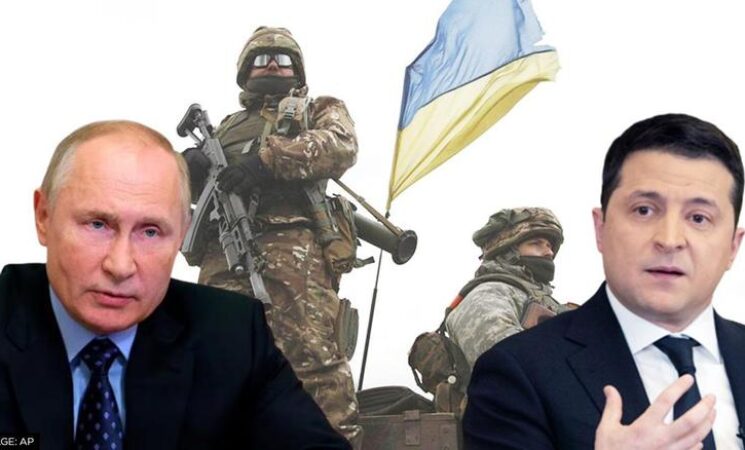25 February 2022, NIICE Commentary 7652
Amadeus O. Quiaoit
The liberal international order has been shaken by the sudden large-scale conventional invasion of Russia in the southern, eastern and northern borders of Ukraine. After months of diplomatic crisis and a global international lobby to find a perfect compromise between the NATO admission of Ukraine and national security concerns of Russia has come down to a mayhem of bloodshed. Over the past two days the winds of war are blowing once again in Eastern Europe after almost 30 years into the post-cold war international order. This article examines some key realist arguments in international relations to help us understand, and speculate, the future regional balance of power in Europe.
To understand the context, we need to contextualize the nuance of realism in international relations. At the most basic level, realism is a theory of international relations that explains the causes of war to the lack of central agency/ or authority, or anarchy, in the international system which promotes a self-help system. Security competition is prevalent which encourages states to enhance their relative military capabilities. Given that war can be frequent, states compete for relative advantages among themselves which can be achieved either through use of force or deceptive diplomacy. Since there is a way of certainty to predict the behaviors and intentions of other states to one another all nations seek to survive or make themselves secure in the system through the possible use of force.
Following the logical lines of realism, we can carefully trace the precipitate causes behind Russia’s behavior to move a swift “shock and awe” damage towards Ukraine. The immediate causes of this war can be traced by the historical significance of NATO expansion after the Cold War. The expansion of NATO is a liberal grand strategy intended to push Russia’s sphere of influence back into the far east which as a direct strategic consequence can effectively “encircle” Russia with forwards military bases and offensive systems of various NATO countries. This total disregard to the strategic and geopolitical realities of Russia has warranted enough provocation to unilaterally invade Ukraine. This hubris can be heavily credited and attributed to the two prominent American realists’ scholars, Professors John Mearsheimer and Stephen Walt, which back in the 2014 Ukrainian crisis argued a simplistic yet compelling causus belli for a potential future major power conflict between the West and Russia. Their respective books, The Great Delusion: Liberal Dreams and International Realities and The Hell of Good Intentions, offers a prism of realist’s images to understand the historical, political, geographical, and strategic foresight in the current armed conflict between Ukraine and Russia. The ideological illusion of liberal foreign policy makers is base on a common assumption that absorbing the former Soviet Republics in Eastern Europe into NATO would gradually bring structural stability and regional peace in Europe. Spreading democratic regimes and liberal institutions far east means pushing forward offensive NATO military systems closer to Russia’s border. This is a national security threat with potential strategic consequences.
After 8 years since the last Ukrainian crisis the Russians have orchestrated a refined military offensive to forcibly remove Ukrainian integration towards NATO. This grand strategy was a highly politicized and militarized use of Maskirova, a marriage of deceptive statecraft through use of coercive diplomacy, employment of disinformation propaganda, and imitation of military combat readiness under the disguise of false joint military exercises with Belarusian ground forces near Russia’s western border. On 24 February 2022 Vladimir Putin finally made the move to push the offensive into Ukraine.
So far, the duration of the Russo-Ukrainian war had come to is a geopolitical escalation as recent mobilization of Russian Mobile Intercontinental Ballistic Missiles were put into high alert status hinting a possibility of escalating from a conventional war into a uncontrolled spiral of strategic nuclear war between Western great powers and Russia. The current multipolar balance of power in Europe is a face of a resurgent, irredentist, and revisionist revival of the old Russian empire. The consequential use of soft power, through economic sanctions, has a hardline effect on the two sides. The severe imposition of economic sanctions and diplomatic protest failed to prevent the impending low intensity bilateral crisis into a present full-blown international armed conflict in Eastern Europe. The West was slow, and unwilling, to put direct military defense to Zelensky. The US and its NATO allies had committed to international calls and an ally signal for active restraint and non-use of military force in Ukraine. From a military strategic perspective, the strategy of off-shore balancing is surprisingly an effective engagement to supply the small Ukrainian Army and sustain their defensive military operations against the onslaught of Russian invasion. This has de facto solidified a new red line between Western Europe and the Eastern European theatre will be the most foreseeable geopolitical character in the near future ahead.
After three decades of hot peace the Russo-Ukraine war has erupted a series of instabilities in the regional order of Europe. The failure of liberal hegemony to contain Russia and preserve strategic autonomy in its respective sphere of influences. The balance of power in Europe will be determined on the basis of restraint, tolerant communication, and strategic observation among great powers. For the mean time, small powers like Belarus and the Baltic states provide enough buffer zone between NATO battle groups and rapid response forces as well as a divide to Russian northern military command. The alignment of these minor states can drastically change the structural geopolitical features. It is certainly to determine that the irreversibly consequences of Ukraine’s defensive war and Russia’s hegemonic attempt to invade the latter’s former territorial spaces has open undeniable possibilities for future conflict in European continent, and even global hostilities if the United States sought to re-assert it’s hegemony in Western Europe.
Amadeus O. Quiaoit is a student of International Affairs at Polytechnic University of the Philippines.

